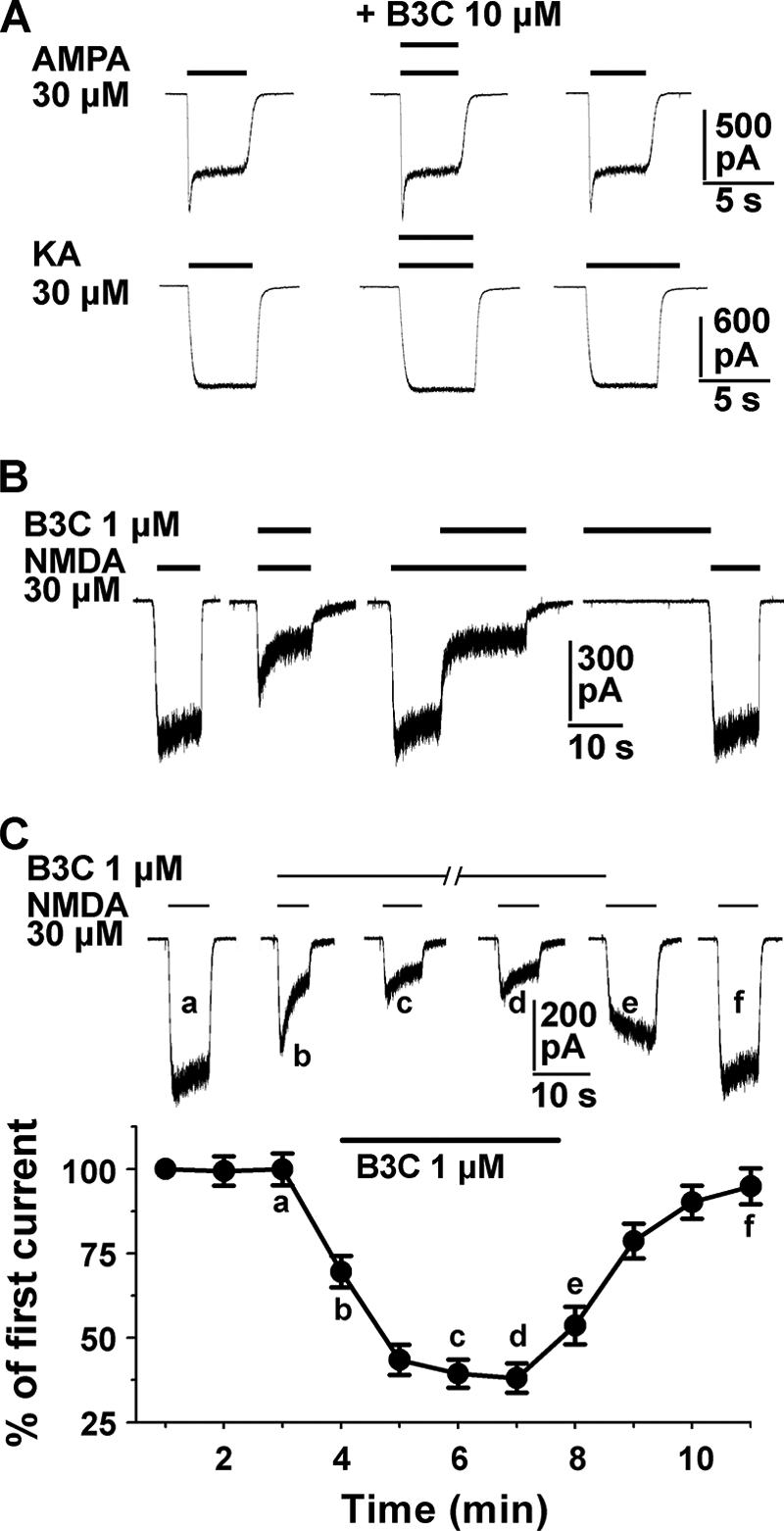FIGURE 2.

Selective, agonist- and use-dependent effects of bis(propyl)-cognitin inhibition. A, current traces show the effect of 10 μm bis(propyl)-cognitin (B3C) on 30 μm AMPA- or kainic acid (KA)-activated currents. Each row of traces is recorded from the same neuron and repeated in five different neurons. Bis(propyl)-cognitin is co-applied with AMPA or kainic acid for the time course indicated above each trace. B, representative current traces recorded from the same neuron show three different modes of drug application: co-application of bis(propyl)-cognitin (0.3 μm) and NMDA (30 μm), co-application made after the onset of the response to NMDA, and sequential application of NMDA following bis(propyl)-cognitin preapplication. Note the different effects of bis(propyl)-cognitin under these different conditions. A similar result was obtained in four different neurons. C, representative current traces (top) and graph (bottom, n = 8) show the control NMDA response and the cumulative inhibition incurred by consecutive co-application of NMDA and 1 μm bis(propyl)-cognitin, followed by the response to NMDA alone for recovery. Each response, normalized to the first NMDA-activated current, is activated at intervals of 1 min. The solid bars indicate the application of NMDA and/or bis(propyl)-cognitin.
